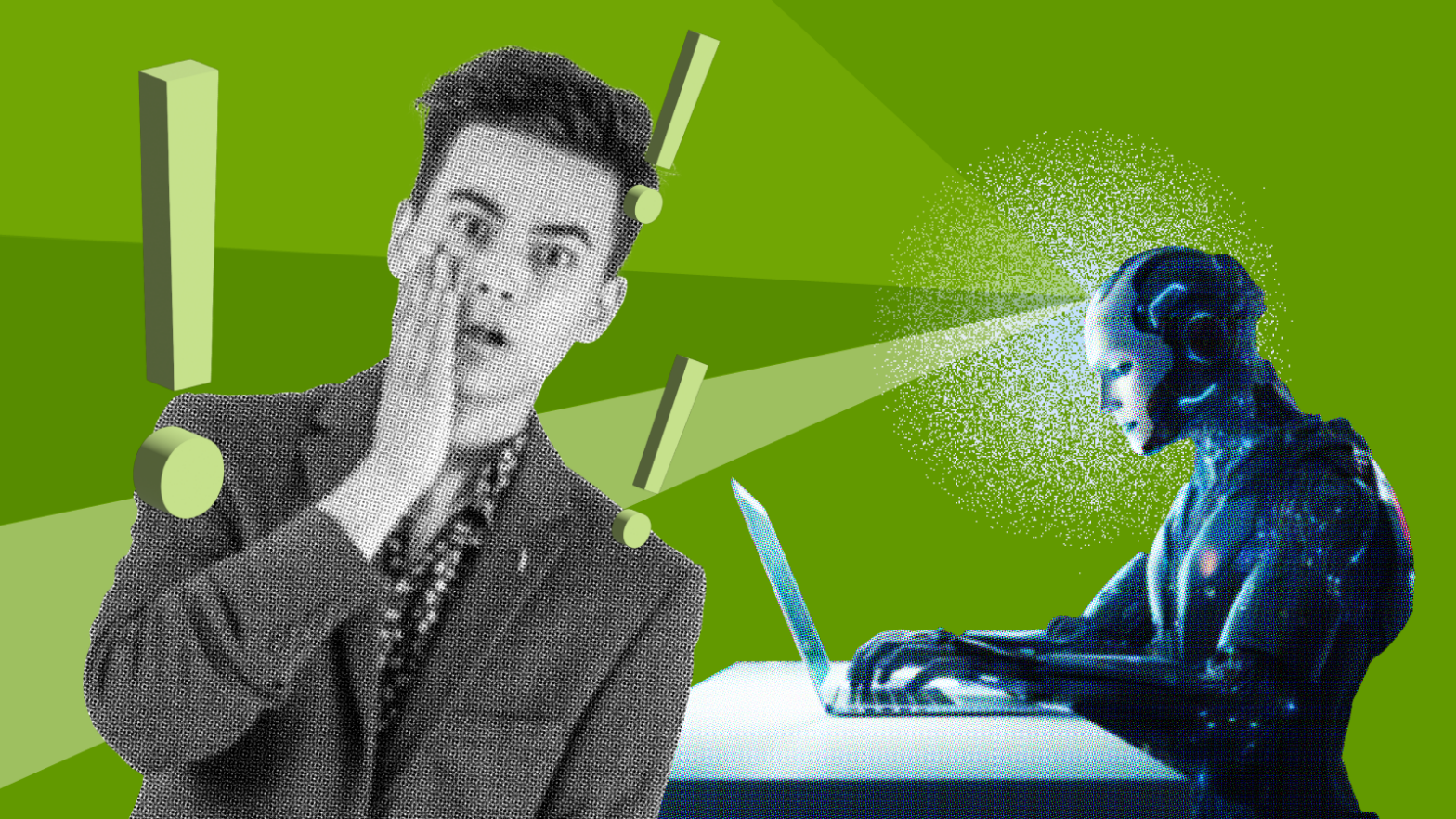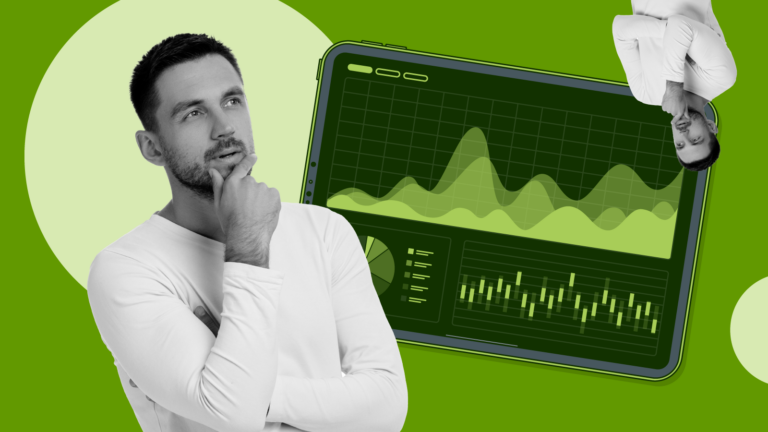
KI am Arbeitsplatz: Die Revolutionierung moderner Unternehmen

The modern workplace is no stranger to change. We’ve seen globalization reshape industries and technology revolutionize communication. Yet, the wave of AI in workplaces feels different, more profound. This isn’t just another software upgrade; it’s a fundamental shift in our relationship with work itself.
Just consider: the AI market size, currently valued at \$86.9 billion, is projected to explode to a staggering \$407 billion by 2027 (Forbes). That kind of investment signals a seismic shift, one that will leave no industry untouched. Imagine the impact as artificial intelligence reshapes industries from healthcare to finance, manufacturing to education.
This isn’t some distant sci-fi fantasy; this is happening now. And as AI in the workplace becomes increasingly sophisticated, its impact on the United States GDP alone is expected to reach a 21% net increase by 2030 (Forbes). Those who adapt, who can harness the power of AI in the work place, will thrive. Those who don’t? They risk being left behind.
The evolution of AI and its integration into various industries
The journey of AI in the workplace began modestly, with simple automation replacing repetitive tasks. Think factory assembly lines or basic data entry. But like a quiet stream carving through rock, AI has steadily reshaped the landscape of entire industries.
Early adopters in manufacturing found that AI in workplaces could optimize production lines, predict maintenance needs, and even manage inventory with unprecedented efficiency. Meanwhile, in the bustling world of finance, algorithms began to analyze market trends, assess risks, and execute trades with a speed and accuracy that outstripped human capabilities.
But the evolution didn’t stop there. The tendrils of artificial intelligence in the workplace reached into healthcare, where it now assists in diagnoses, personalizes treatment plans, and analyzes complex medical images with remarkable precision. Even creative fields like marketing and design are finding ingenious ways to leverage AI, from crafting targeted ad campaigns to generating innovative product designs.
Understanding the different types of AI: Narrow vs. General AI
To truly grasp the future of AI in the workplace, it’s crucial to understand the different types of artificial intelligence at play. The AI we encounter most often is Narrow AI, also known as Weak AI. Don’t let the name fool you; this type of AI is anything but weak in its designated field.
Narrow AI is designed to excel at a specific task or a narrow range of tasks. Think of the facial recognition software unlocking your phone, the chatbot answering customer service questions, or the recommendation engine curating your next movie marathon. These systems are incredibly powerful within their defined boundaries, but they operate with a laser focus on their specific purpose.
On the horizon, however, looms the concept of General AI, sometimes called Strong AI. This represents the kind of artificial intelligence we often see depicted in science fiction – a more generalized intelligence capable of understanding, learning, and applying knowledge across a wide range of tasks, much like a human brain. While General AI is still largely theoretical and years, perhaps even decades, away from practical application, it underscores the rapid pace of development in the world of artificial intelligence. The distinction between these types of AI is crucial for understanding not only where AI in workplaces is today but also where it’s headed tomorrow.

How AI is revolutionizing the work environment
Artificial intelligence (AI) is no longer a futuristic concept confined to science fiction; it’s rapidly transforming how we work and interact with our workplaces. Let’s explore the profound impact of AI in the workplace.
Enhancements in productivity and efficiency
One of the most significant ways AI is revolutionizing the work environment is by unlocking unprecedented levels of productivity and efficiency. By automating repetitive tasks and streamlining complex processes, AI empowers employees to focus on more strategic and creative aspects of their roles. This shift allows businesses to optimize their operations and achieve more with the same resources. In fact, a study from Forbes found that “64% of businesses believe AI will increase their overall productivity.”1 This fusion of human ingenuity and AI’s computational power paves the way for a future where work is not just about tasks but about innovation and value creation.
Improved decision-making through data analysis
AI’s capacity to analyze vast datasets with incredible speed and accuracy empowers businesses to make data-driven decisions. This enhanced ability is particularly valuable in today’s data-rich environment. AI algorithms can identify patterns, trends, and insights that might be missed by human analysts. Consequently, businesses can optimize their strategies, mitigate risks, and capitalize on opportunities, leading to more informed and effective decision-making across all levels of an organization.
The role of AI in enhancing workplace safety and sustainability
Beyond productivity and decision-making, AI is playing a vital role in creating safer and more sustainable workplaces. AI-powered systems can monitor work environments in real time, identifying potential hazards and enabling proactive interventions to prevent accidents. Furthermore, AI can optimize energy consumption, minimize waste, and reduce a company’s environmental footprint. By leveraging AI in these ways, businesses demonstrate a commitment to their employees’ well-being and a more sustainable future.
Key areas benefiting from AI in the workplace
Artificial intelligence is no longer a futuristic concept; it’s actively shaping the present landscape of various industries. Let’s explore some key areas where AI is making significant contributions.
Collaboration and communication tools
Have you ever imagined a world where scheduling meetings or brainstorming ideas could be as easy as asking a question? With AI in workplaces, this is becoming a reality. AI-powered tools can analyze communication patterns, automate routine tasks, and even suggest relevant information during discussions, fostering seamless collaboration. For businesses looking to integrate advanced AI capabilities with customizable features, exploring open-source software options can provide the flexibility and control needed to tailor solutions to specific organizational needs.
Human resources: From recruitment to performance management
Think about the tedious process of sifting through countless resumes. AI can streamline this by automating candidate screening and identifying the best fits based on predefined criteria. This allows HR professionals to focus on more strategic tasks, such as talent development and employee engagement.
Manufacturing and supply chain optimization
The manufacturing industry thrives on efficiency, and AI offers a powerful solution. Imagine predicting equipment failures before they occur or optimizing inventory levels in real-time. By leveraging AI-driven insights, businesses can enhance productivity, reduce downtime, and make data-driven decisions.
Customer service: Chatbots and virtual assistants
From instant responses to personalized interactions, AI-powered chatbots and virtual assistants are revolutionizing customer service. Consider the fact that “ChatGPT garnered 1 million users within the first five days of its release.” This speaks volumes about the growing demand for instant and efficient customer support, a need that AI is poised to fulfill. As AI technology continues to advance, we can anticipate even more sophisticated applications in the realm of customer service.

The impact of AI on employee roles and job satisfaction
The integration of AI for the workplace is revolutionizing traditional job roles and reshaping how we perceive job satisfaction in the modern work environment. This transformation isn’t about replacing human employees but rather augmenting their capabilities and redefining their roles.
Skills shift: Preparing the workforce for an AI-driven future
As AI takes over repetitive or data-heavy tasks, employees can upskill or reskill to focus on areas that require uniquely human skills such as creativity, critical thinking, and complex problem-solving. This shift necessitates a proactive approach to workforce development, providing employees with opportunities to acquire new skills and adapt to evolving job demands.
Moreover, fostering a culture of continuous learning within organizations is paramount. By investing in training programs and providing resources that empower employees to embrace new technologies, companies can ensure a smoother transition into an AI-driven workplace.
AI as a tool for diversity, equity, and inclusion
Beyond its impact on individual roles, AI has the potential to foster diversity, equity, and inclusion (DE&I) in the workplace. AI-powered tools can help mitigate bias in recruitment processes, ensuring a more level playing field for candidates from diverse backgrounds. For instance, AI can be used to screen resumes based on skills and experience rather than demographic information, reducing the impact of unconscious bias.
Furthermore, AI can facilitate personalized learning and development opportunities, catering to individual employee needs and learning styles. This personalized approach can be particularly beneficial for underrepresented groups, providing them with tailored support to advance their careers.
Ethical considerations and privacy concerns with workplace AI
The increasing presence of artificial intelligence in the workplace brings substantial ethical and privacy considerations that require careful examination. As AI systems become more integrated into our work lives, striking a balance between leveraging their benefits and safeguarding employee rights becomes paramount.
Navigating the balance between surveillance and safety
One significant concern revolves around the potential for workplace AI to blur the lines between surveillance and safety. While AI-powered tools can be implemented to monitor workplace safety, for instance, detecting potential hazards or ensuring compliance with safety protocols, the extent of monitoring raises valid privacy concerns.
The use of AI for sentiment analysis, for example, where employee communications are analyzed for emotional cues, can be perceived as intrusive. Similarly, the use of facial recognition technology for access control or attendance tracking may evoke feelings of constant observation, impacting employee comfort and autonomy.
Finding the right balance necessitates transparency in AI deployment. Employees should be informed about what data is collected, how it is used, and for what purpose. Clear guidelines and policies regarding data storage, access, and retention are essential to mitigate privacy risks and foster trust.
Addressing bias in AI algorithms
Another crucial ethical consideration pertains to the potential for bias in AI algorithms. AI systems are trained on vast datasets, and if these datasets reflect existing societal biases, the resulting AI models can perpetuate and even amplify these biases within the workplace.
This bias can manifest in various ways, from biased hiring decisions based on flawed data analysis to unfair performance evaluations influenced by skewed metrics. For instance, an AI system trained on historical hiring data that reflects gender imbalances might inadvertently favor male candidates over equally qualified female candidates.
It’s important to remember that as powerful tools, AI systems lack the nuanced understanding of fairness and ethical implications that humans possess. “AI’s Explainability Problem” This inherent limitation underscores the importance of rigorous testing, auditing, and ongoing monitoring of AI systems to identify and rectify biases.
Final comments
In conclusion, we affirm that AI in the workplace is not a fleeting trend but a revolutionary paradigm reshaping the contours of modern businesses. We are at the cusp of an AI revolution where the amalgamation of machine intelligence with human ingenuity is fostering a landscape brimming with opportunities and boundless possibilities.
From decoding unprecedented business insights to enhancing customer engagements, from revolutionizing operational efficiency through automation to fostering innovation with deep learning, and from redefining cybersecurity to endorsing sustainable business practices, we witness AI imprinting indelible marks of revolutionary strides in the business arena.
We invite you to join us in this fascinating journey as we embrace AI, the force majeure revolutionizing modern businesses, steering us towards a future of infinite potential and unprecedented growth horizons, nurturing a business ecosystem that is resilient, intelligent, and forward-looking.
Finden Sie heraus, wie DevSkiller dabei helfen kann, bessere Mitarbeiterschulungsprogramme zu entwickeln. Termin für eine Demo mit einem unserer Produktexperten oder sehen Sie sich diese kurze 5-minütiges Demo-Video um mehr darüber zu erfahren.




